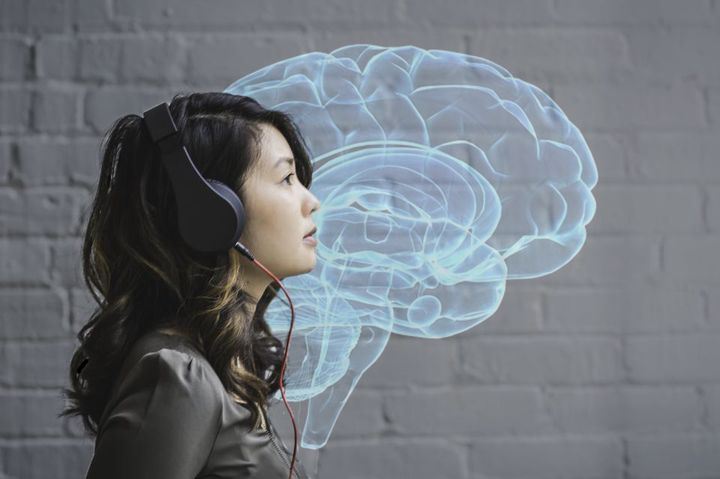
Edited by S at www.eastcoastwebdesigns.ca
Are you severely impacted by chewing, tapping, or whistling? Then this may be good news for you! Misophonia is a neurological disorder in which sights and sounds cause a severe aversive (and fight flight) reaction. A study at Duke University’s Misophonia and Emotion Regulation Program proposes that the misophonic reaction could be lessoned without relapse with the usage of a technique that has been growing interest in the scientific community.
Sufferers of misophonia experience an often over-active amygdala, and live within the scope of a fight/fight/freeze reaction to everyday occurrences. For persons with this disorder, there is no habituation. Imagine sitting in a room with a ticking clock that seems to get louder and louder, eventually you may forget it’s there. For persons with misophonia, the clock becomes their only focus. The brain thinks the clock is a is a threat, and a physiological response leads to emotional discomfort, anger, and other sensations. Memory is consolidated when it is moved from our short-term memory into our long-term memory. Once the memory is encoded it is referred to as a memory trace (or engram). However, contrary to what we may think, recalling memory (or activating a memory trace) is not like watching a recording that replays consistently every time we watch it. Instead, each time we retrieve a memory it alters slightly, as it reconsolidates. In other words, previously consolidated memory are retrieved and then consolidated again. Research on memory reconsolidation has demonstrated that the association between a particular stimuli and high autonomic nervous system arousal can be changed when memory is unstable (at the time of reconsolidation).
While on the surface it can be tough to grasp just what exactly memory reconsolidation means. Many may show concern because for a person that has not heard of it, they may wonder how it differs from Cognitive Behaviour Therapy, which does not work for misophonia, and could make it worse. The difference is actually quite astonishing — and the implications could be life-changing for sufferers of misophonia. As explained in a research paper in 2009 by Toomey and Ecker, “CBT by design does not access or depotentiate such deeply unconscious material, but we believe coherence therapy will prove to do precisely that, and would therefore yield post-therapy brain scans of responders that show diminished activity”.Every time we retrieve a memory from our long term memory system it alters slightly. This is something LeDoux’s lab discovered early in the millennium.
This is contrary to prior ideas about memory in which scientists thought that once a memory was formed it was stable and always retrieved as the exact same memory. Dr. Jennifer-Jo Brout of the IMRN (International Misophonia Research Network) explains this in more detail: “Using memory reconsolidating LeDoux and colleagues have already proven that the automatic physiological response to a stimuli (or a memory in regard to sound in misophonia) can be changed in simple ways. Whereas most behavior therapists rely on exposure to aversive stimuli in order to desensitize people to trauma (in this case a noise, pattern of sound, or repeating noise) or to relearn an association between a sound and a particular person, etc. they are often unable to obtain results, and if they do obtain results, they don’t last. This is because of memory. However, in LeDoux’s lab this problem with memory was solved many years ago using subconscious ways to change the way memory was reconsolidated. I believe, and have since I first learned of this work, that this is a therapy that is most promising for misophonia.” The LeDoux lab has studied the misophonic reaction in rats. Interestingly, memory reconsolidation showed great promise in re-consolidating the fear and fight/flight trigger in rats. Of course, the translation from animal research to humans is always necessary. This is why the study at Duke University becomes important. Working with consultation from Joseph E. LeDoux and his lab at NYU, the Misophonia and Emotion Regulation Program hopes to begin work on a study that will involve human clinical trials to see if this work is appropriate for human subjects.
Learn more about memory reconsolidation from Dr. LeDoux himself
This study is important for sufferers of a disorder that have previously been left with little answers from the scientific community. While studies have begun popping up, many are dealing with the preliminary underpinnings of the disorder. This research from the LeDoux lab, and Duke University, shows that misophonia research is taking great leaps forward. This particular study is part of not one, but two, ground-breaking studies that involve the Duke program. A second sound study aims to underpin why certain sounds are triggers and not others. This study will include collaboration with Dr. Suhkbinder Kumar, who made waves just a few months ago with his paper, “The Brain Basis For Misophonia”, from Newcastle University. This study will also include Dr. Tammy Reigner of Nemours Hospital, and Mercede Efranian, using software to “deconstruct” these particular sounds. Those interested in funding this study can make donations directly to the program at Duke University.
